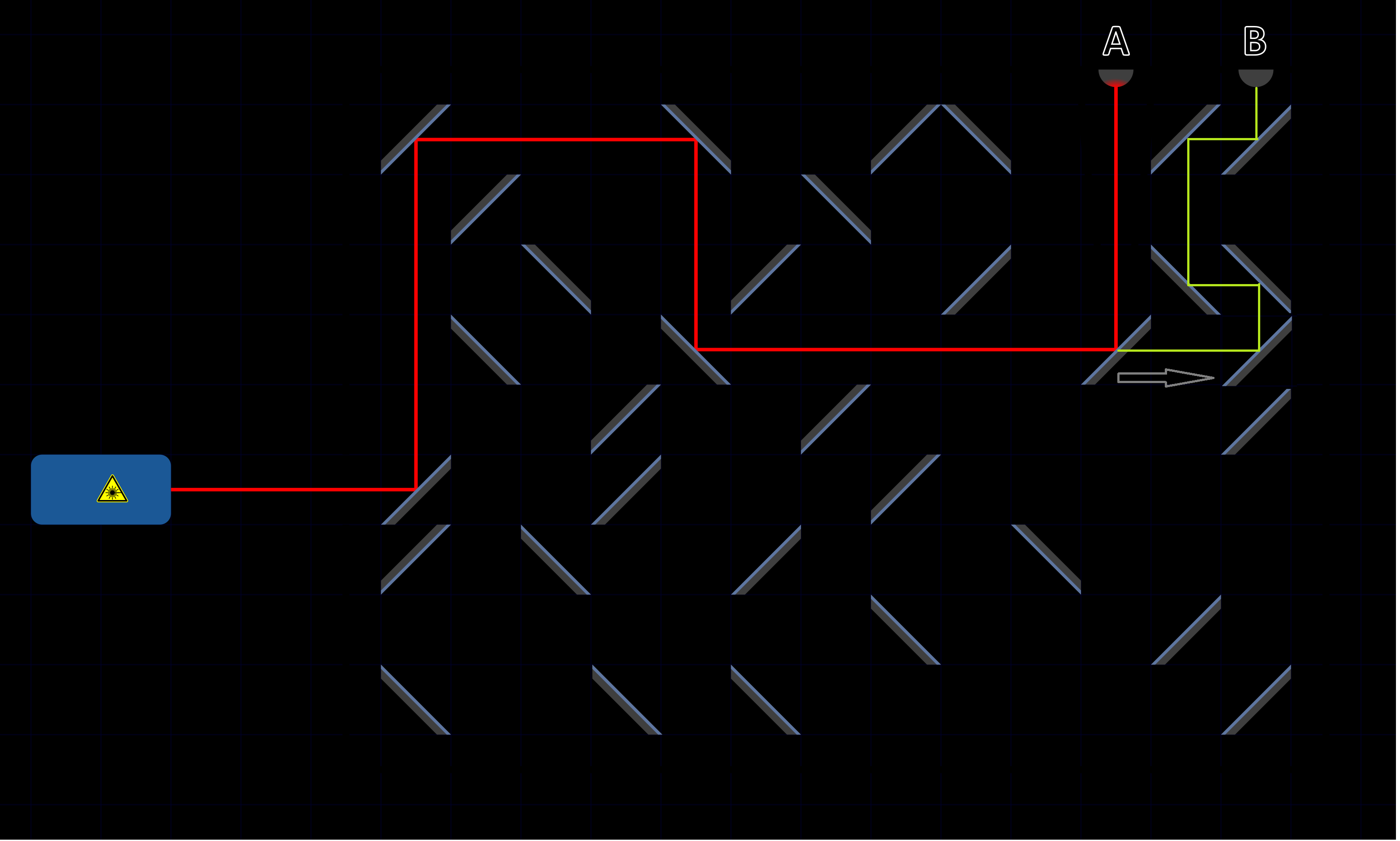
You have a setup like in the image above. But it seems like detector A does some weird things. You should better check it with detector B. What is the minimum number of mirrors you have to move (translate and rotate arbitrarily) to bring the laser beam onto detector B?
- Please leave the mirrors which are used to direct the laser to detector A as they are, because if it turns out detector A is not broken you want to switch back to it. I mean it's quite well shielded from stray light compared to detector B.
- The thick black lines are walls. Please don't burn any holes in them.
- The mirrors all look the same. They have only one side (blue) with reflective coating.
- The grey grid is only for orientation.
- The detectors work for any angle of incidence.
- Make sure that the beam actually hits the detector, not only stray light.
- And don't look into the laser beam.








